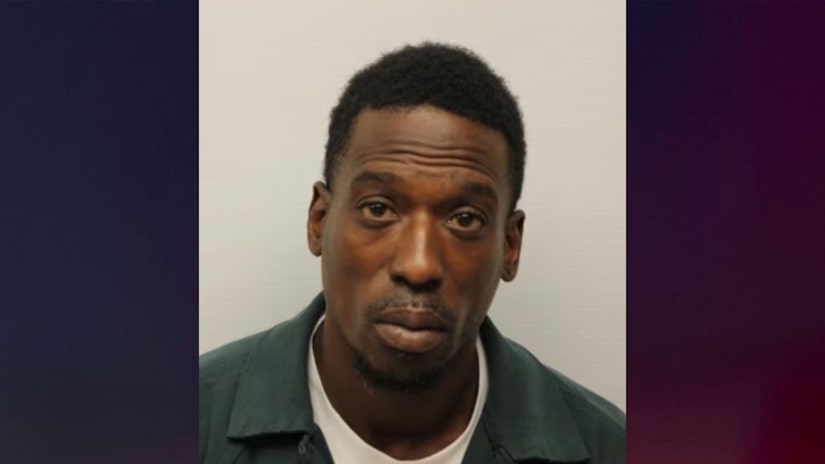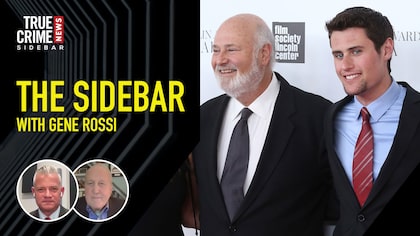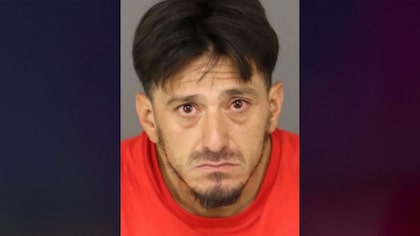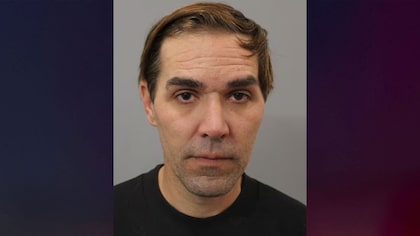Wrongly convicted Ohio man snags other inmate's cigarette butt to clear his name
06/05/2017 5:13 pm PDT
A grandmother savagely slaughtered in her own house. The killer raped her, slashed her throat and beat her to a pulp.
The woman's screams wake up her 6-year-old granddaughter. The terrified little girl tells cops who did it. He says he didn't. A jury said he did, and sent him to prison for life. He ultimately proved his innocence.
The beautiful rolling hills of Ohio are an oasis of green in the drabness of the Rust Belt. Like many of the good people there, Clarence Elkins made his living at a steel plant.
"I was a hot and cold forging operator," said Clarence. "I was finally able to make a day shift. Then the inevitable happened."
The inevitable: The cold-blooded murder of Clarence's mother-in-law Judy Johnson on the night of June 7, 1998,
"We had I would say an average relationship, you know, any son-in-law and mother-in-law would have," said Clarence. "I didn't have anything against her in any way."
The killer beat Judy so severely that her nose, jaw and collarbone were fractured. Then the monster took Judy's 6-year-old granddaughter to her room and did the unthinkable.
"The little girl ended up being attacked as well, raped, assaulted, knocked unconscious, left for dead," said University of Cincinnati law professor Mark Godsey, who co-founded and directs the Ohio Innocence Project. "Fortunately she survived."
The next morning the girl regained consciousness and left a chilling voicemail for a friend: "I'm sorry to tell you this, but my grandma died. And I need somebody to get my mom for me. I'm all alone. Somebody killed my grandma."
Still naked from the horrific assault, the little girl ran next door for help.
"She walked to the neighbor's house unclothed, blood streaming from her forehead, and knocked on the door and told the neighbor that somebody had hurt her grandma and her, and the neighbor at that time told her 'Just wait, I'm going to call you mother,'" said Larry Whitney, Clarence Elkins' defense attorney.
But for some strange reason, the neighbor left the girl on her doorstep for 45 minutes before taking her to her mother.
"When a child appears on your front step in that way, why wouldn't you invite the child into your home? Why wouldn't you wrap the child up in a blanket? Why wouldn't you call the police when a child has obviously been assaulted?" said Larry Whitney.
The girl told the neighbor the killer looked like Clarence Elkins. That was enough for police to get an arrest warrant.
"I remember hearing somebody come up the driveway real fast," said Clarence.
A SWAT team swarmed Clarence's house and immediately slapped handcuffs on his 15-year-old son Clarence Elkins II.
"They told me I was under arrest for the murder of Judith Johnson, and I just said 'What?' I didn't even know what to think about it," said Clarence II. "It was almost like you're in a dream but you can't do nothing about it."
He never had the time to process the fact that his own grandmother was murdered. And the boy wasn't even the suspect. His brief arrest was just collateral damage in the search for who cops thought was the real killer: His father, Clarence Elkins.
"I said 'What's going on?' And they said 'Turn around, put your hands up, and walk backwards slowly,' and I'm like 'You got the wrong house here or something,'" said Clarence. "And then eventually they told me about a half-hour later that I was a suspect in a murder of my then-mother-in-law Judith Johnson, and I said 'You have the wrong person. There's nobody here that's done anything like that.' They said they had a witness and it was this 6-year-old girl."
In the county jail, Clarence found support from one man who believed in him: Pastor Tom Williams.
"When I first met Clarence, I said 'I want you to look me in my eyes, I want you to tell me: Did you do this?'" said Pastor Williams. "And he looked at me and said 'I did not do this. I don't even know what's going on. I did not do this.' And from that moment on he had me, he had me."
Defense attorney Larry Whitney says Clarence couldn't have been at the crime scene because he was at a bar more than an hour away.
"Although we didn't have an alibi for that time, we had a virtual alibi, we had evidence as to where he was in such a way that he would have had to flew at 80 miles an hour to get to the scene of the crime and back," said Clarence's defense attorney Larry Whitney.
Clarence stood trial for murder, attempted murder and rape.
"The motive was the difficulty that he had with his mother-in-law personally," said Whitney.
There was no physical evidence tying Clarence to the crime scene. But the eyewitness evidence -- the little girl's claim -- dramatically changed at trial. Instead of saying the killer looked like Clarence, she told the jury it was Clarence.
"In my cross-examination of her, that was one of the discrepancies: 'Didn't you tell the neighbor that it looked like Uncle Clarence, and then later on you ended up saying "It was my Uncle Clarence,"'" said Whitney.Jurors believed the little girl, and convicted Clarence Elkins. He was sentenced to life in prison.
"I thought 'Well you know, pretty much my life is over now,'" said Clarence.
The moment he walked through the prison gates Clarence knew he had a target on his back.
"It's not a safe place," said Clarence. "With the charges I was charged with, most inmates don't look on that too lightly. I was always having to watch my back. I lost faith in the justice system and lost trust in about everybody."
For years Clarence rotted away in his prison cell. Then a sensational new development gave him hope. Science was about to turn this verdict upside down. His legal team used new technology to test skin cell DNA left in the little girl's panties.
"We see DNA testing that can be done because that gives you a clear answer, yes or no, if the person is innocent or not," said the Ohio Innocence Project's Mark Godsey.
And the results proved the DNA didn't belong to Clarence Elkins, but to a mystery man.
"I realized that somebody was framing me, somebody was setting me up," said Clarence.
But just who was framing him?
Prisons are filled with thousands of men who claim they are innocent. And Clarence Elkins is no different.
"Everybody in prison, they say they're innocent," said Clarence.
Clarence is one inmate who really is innocent.
"I got arrested, falsely accused and wrongly convicted," said Clarence Elkins.
An Ohio jury sent Clarence to prison for life in the brutal murder of his mother-in-law Judy Johnson and rape of his 6-year-old niece.
How would he convince the courts he didn't do it?
"It right away caught my attention because it had all the earmarks that we're looking for: There was a very shaky eyewitness I.D., and more importantly there was DNA evidence that could be tested," said Mark Godsey from the Ohio Innocence Project.
That eyewitness was Clarence's 6-year-old niece. She told the court: "Uncle Clarence did it." Then, in a stunning reversal, years later she recanted her story.
"I think it was 2002 when she took it back, when she said that was afraid to go against what people were encouraging her to testify to," said WJW-TV reporter Stacey Frey. "Clarence tried to get an appeal on that basis. He was denied."
So his team hired a private investigator to identify people in the neighborhood who might be the real killer.
"One of them they identified was Earl Mann," said Mark Godsey.
Earl Mann, a convicted sex offender. Remember when Clarence's niece went next door for help after the attack? That was Earl Mann's house. And his girlfriend had told the child to wait outside while Mann was inside. The girl never saw him.
"She didn't want to invite the little girl into the house to get another look at Earl Mann," said former Ohio Attorney General Chief Deputy Jim Canepa.
"He looked like Clarence Elkins and he had just been released from prison a few days before the murder and rapes in this case, and was living next door, who happens to look like Clarence Elkins," said Godsey.
And you'll stunned at what Mann said to cops after an unrelated arrest: "Earl Mann had been picked up for a violent crime and on his way to the police station, said to the officer who arrested him: 'Why aren't you arresting me for the murder of Judy Johnson?'" said Godsey.
In an unbelievable turn of events, Mann fell right into Clarence's hands. He was transferred to the same prison cell block in 2005.
"At first I didn't want to point the finger and blame somebody without some kind of evidence, so I contemplated possibly maybe getting some kind of DNA from this guy," said Clarence.
And he found it, in of all places, a prison ashtray.
After years of praying and hoping, Clarence finally had the key that would unlock his cell door.
"I seen him putting a cigarette butt out," said Clarence. "And I retrieved the cigarette butt out of the ashtray, a makeshift ashtray, and put it in a Bible concordance I had."
Clarence took the Bible back to his cell, placed the butt in a baggie and sent it to his lawyer.
"Secretly mailed it out got it out in the mail and got it to the lab and I got a call about a month or so later: 'We got a 99.9-percent match,'" said Clarence.
But Clarence needed some friends in high places to get the DNA results to the court. He found a key ally in Jim Canepa, who then worked for the Ohio Attorney General.
"So victim number one, victim number two forensic evidence from the rapes match each other and exclude Clarence," said Canepa.
And Clarence had another supporter at the Attorney General's Office who would become more than just a friend -- a legal secretary named Molly. She eventually became Mrs. Clarence Elkins.
"I remember when we received the letter about Clarence Elkins, I even thought 'Wow, is he really innocent?'" said Molly Elkins. "And then I was quite surprised that he was actually still in prison. And they had evidence overwhelmingly that he shouldn't have been there."
Now the full power of the office of the Ohio Attorney General was behind Clarence Elkins' bid for freedom.
And in a dramatic turn of events, Clarence Elkins was completely exonerated. He walked out of prison a free man.
The real killer turned out to be that neighbor next door, Earl Mann. He pleaded guilty to the crimes Clarence was accused of and was sentenced to life in prison.
"To be part of proving your innocence from behind bars and concrete walls and barbed wire, it's pretty amazing stuff, I think," said Clarence.
Today Clarence and his sons are making up for lost time. They're bonding over bikes, billiards and posing for pictures at family gatherings.
But what about the 6-year-old niece who accused her Uncle Clarence?
"I still don't hold any ill-willed feelings towards her. She is just an amazing strong person to survive," said Clarence.
And so is Clarence, cherishing the freedom of riding his motorcycle whenever he wants. He and Molly established a scholarship fund at the University of Cincinnati Law School, where the Ohio Innocence Project is based. He says he doesn't want another innocent person to go through what he went through.
"I wouldn't wish that kind of nightmare on anyone, on my worst enemy. It's living hell, so to speak," said Clarence Elkins.
As for Earl Mann, he will never see the outside of a prison again. On top of the murder charges he pleaded guilty to in this case, he's also serving a seven-year sentence for three unrelated sexual assaults -- attacks that may have never happened had the right man been behind bars in the first place.




